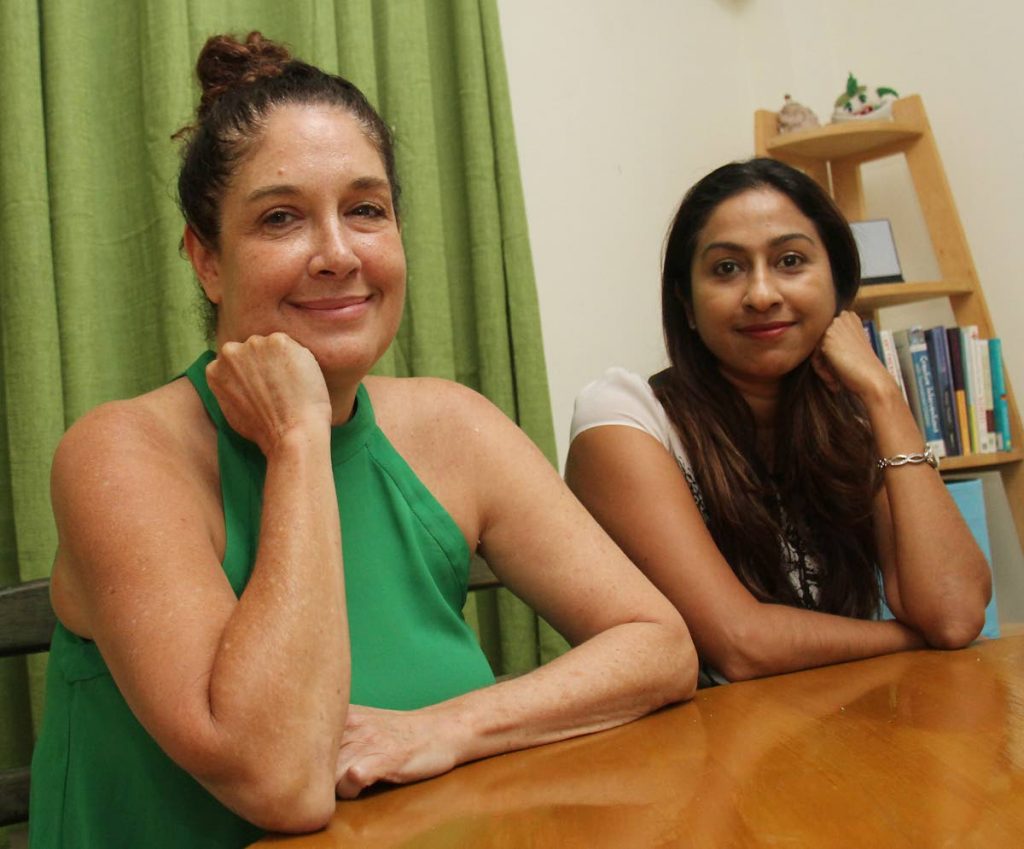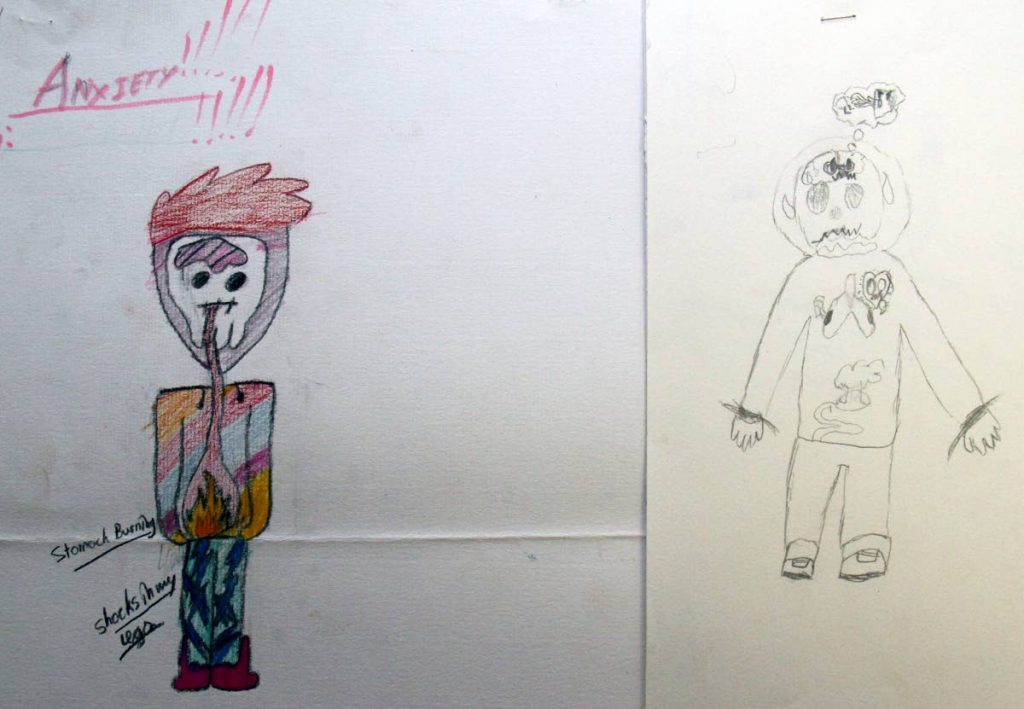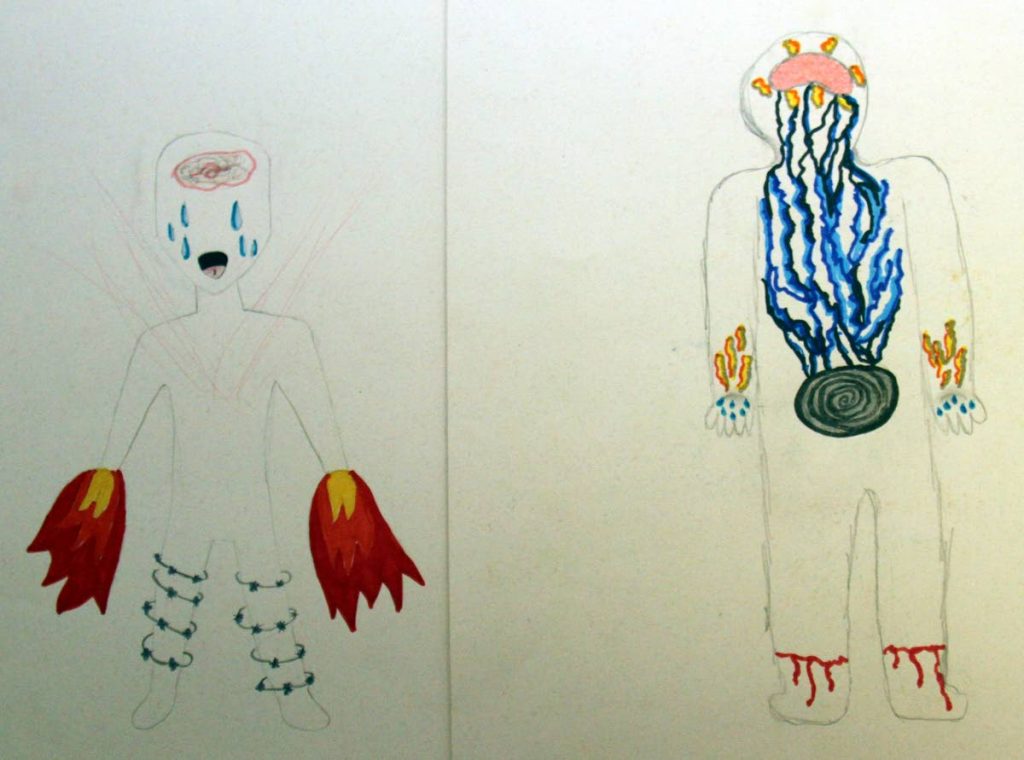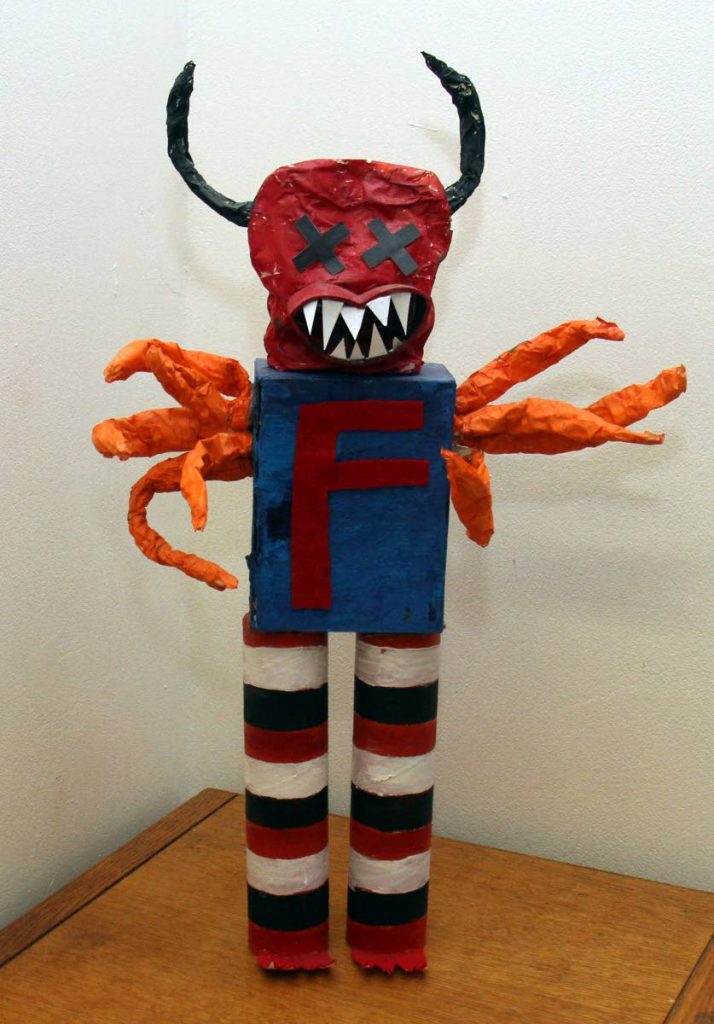Life’s more than SEA

Standard five and its preparation for the Secondary Entrance Assessment (SEA) Examination can be a very stressful time for many children. The stress, pressure, and resulting anxiety could lead to physical, emotional, and mental illness.
Anxiety symptoms could include crying, meltdowns, sleeplessness, nervousness, stomach aches, headaches, chest pain, vomiting before school, unexpected compulsive behaviour, aggression, and even depression.
This is why psychotherapist and art therapist Sian MacLean has been working with SEA students for the past five years to help them with stress relief and anxiety management. And this year, clinical psychologist Lena Jogie is there to assist her in the workshop.
MacLean said parents may feel the child was not being serious about their work and so was not performing but the child might be too anxious or have other difficulties with the work.
She said the pressure was high for several reasons. One was that the SEA workload was more than in previous years, and what used to be taught in forms one and two was now being taught in standard five.

In addition to the academic pressure, Jogie said the children put pressure on themselves. She said they may not have a proper concept of secondary school but they know they want to get into a “prestige” school because their friends talk about it. Also, they may not want to disappoint their parents, or they may want to get into the schools their parents attended.
There were also external pressures from primary schools competing with each other for students with the highest marks or who pass for the best schools, as well as from teachers and parents.
Also the continuous assessment component allowed for non-academic components to go towards their marks but that was no more. “Now we have comprehension-based academics with a lot of worded problems. Plus, this year a lot of the exams will be on one day where in the past the essay was done on another day. Also because of a change in curriculum, the children this year haven’t had enough time to get ready for it,” said Jogie.
She said the children were not enjoying learning but were just preparing for exams and losing a lot of what they learned in the process.
MacLean added, “From the time they enter primary school, SEA is like this monster looming somewhere in their future and the closer they get to it, the more pressure they feel.”
The result of this pressure and anxiety? “Sometimes they just shut down. They are not able to do any work. They may know the work but their brain just isn’t function anymore. When an emotional brain gets too overwhelmed the thinking brain shuts down, they freeze. That affects memory, reading, comprehension, all types of learning, and that could happen in the exam as well.”
Therefore, MacLean and Jogie taught children about anxiety, how to recognise the feeling, learn triggers, and gave them tools to deal with chronic stress.

MacLean explained that, when the children could identify the symptoms it made the anxiety less powerful. “I treat it like a monster. We externalise the anxiety, we confront it so it’s not living inside of them that’s taking over their mind and body. They are pulling it out and facing it so they are more in control of it.”
They also worked on self-care – teaching children the importance of sleeping, eating properly, and getting exercise – as well as helping them to see the bigger picture. “We help them see beyond SEA. To some of them SEA is the end. If they don’t pass for a particular school their life is over. So part of what I do is help them see beyond that into the future so they realise, ‘SEA is just one small thing in my life. My life isn’t going to be over when I’m 12,’” said MacLean.
All this was done through drawings, sculptures, paintings, and verbal sharing. For example, the children were asked to do body drawings so they could visually identify their symptoms. The most common were the brain going blank, burning in their stomachs, sweaty palms, and tingling in their limbs.

“This helps them recognise the symptoms in themselves and to understand what’s going on in their body. If they don’t know they might get scared and think, ‘What’s wrong with me? Or I’m sick,’ but at least this normalises it. When they share it they realise others have the same thing. That shared experience is really good for them. It takes away some of the fear.”
The children in their latest workshop also came up with the idea of an SEA monster with a big mouth with sharp teeth, constantly telling them they would fail, and tentacles of anxiety waiting to get them.
She said the interaction with their peers was very important as they listened to each other, shared their coping strategies, and realised others were going through the same things.
Jogie noted that some of the children were referred to them by therapists, psychologists, teachers, or parents who saw the signs of anxiety as SEA drew near. Other children were those with ADHD, dyslexia, or other learning disabilities who needed concessions for SEA.
She said in addition to assisting MacLean in activities, she helped determine the needs of children with assessment reports, as well as performing assessments to see if a child needed concessions for the exam.
At the end of the group, MacLean and Jogie discussed with the parents the issues of their children, helped the parents understand what was going on with their children, and suggested what they could do to help. The most common advice to parents was to give the children a break and to balance the academics with something fun.

“With these kids a lot of their extra curricular – swimming, tennis, art, drama, music – get taken away in standard five and they are expected to only go to school, do homework, take extra classes, and study. These kids basically lose their lives and have no time to relax but they need the balance,” said MacLean.
Jogie added that children did not only have to deal with school stress but peer conflict, family, social and other stressors as well. Therefore, placing more academic pressure on them could actually cause them to regress instead of progress.
She stressed that what she and MacLean did at the workshop was not academic. Instead they talked about things, did fun activities, and shared their experiences. Unfortunately, she said some of the children said their hour at the workshop was the only downtime they had for the week.

Comments
"Life’s more than SEA"